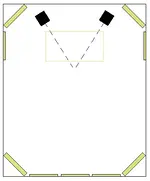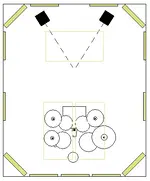AMcB
Why you gotta be so mean?
How much acoustic foam do you guys think I would need for a room 12'x10' I'm looking a 2'x4' pieces. I'm new to room treatment so I have no clue. Would I do the ceiling? I honestly have no clue. Any help would be great. oh and this is the room I's be mixing and recording in.
Thanks,
AMcB
Thanks,
AMcB



